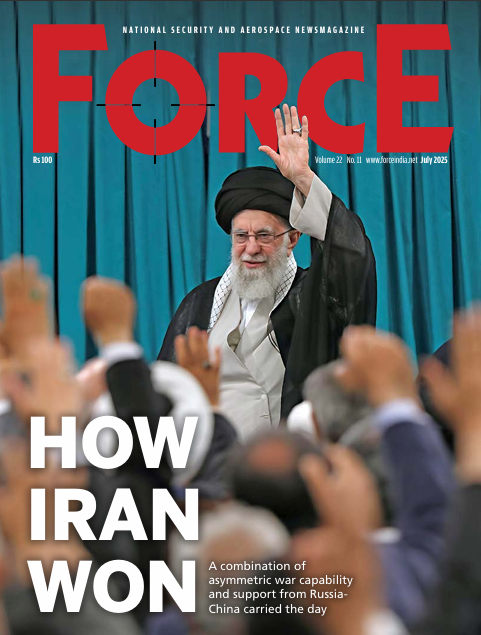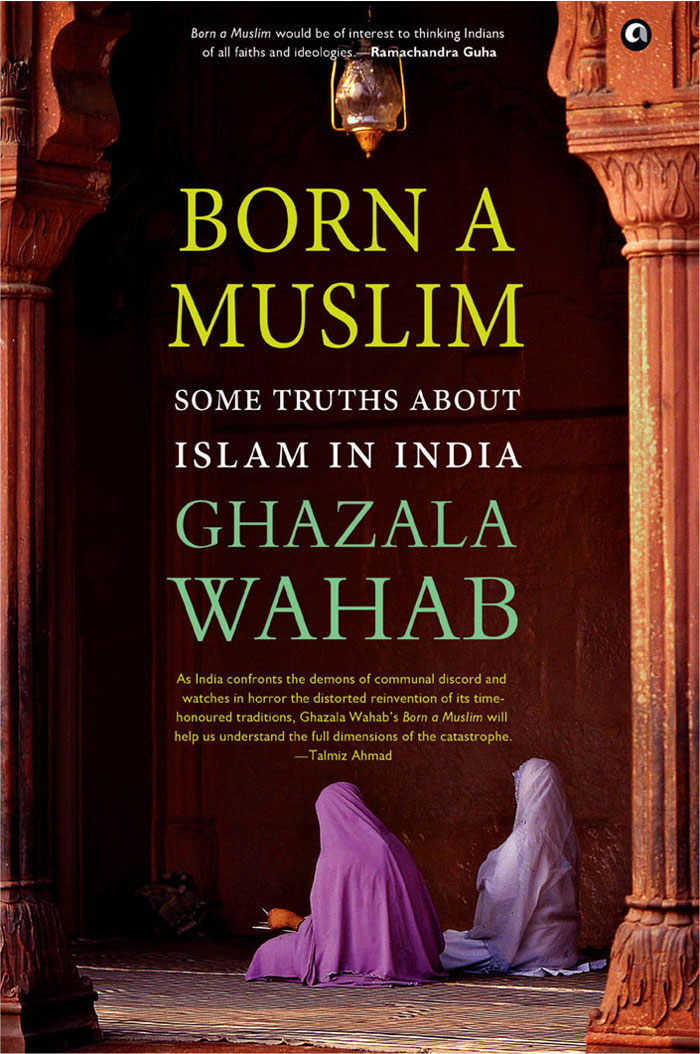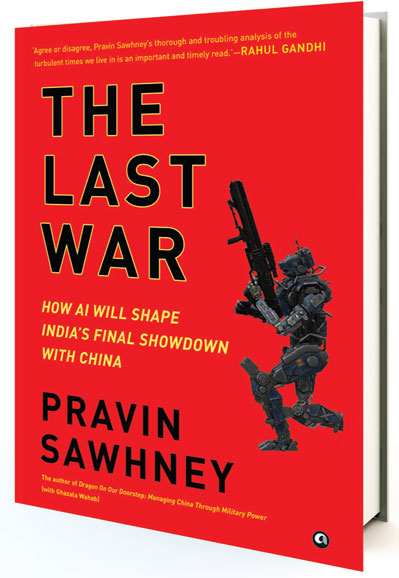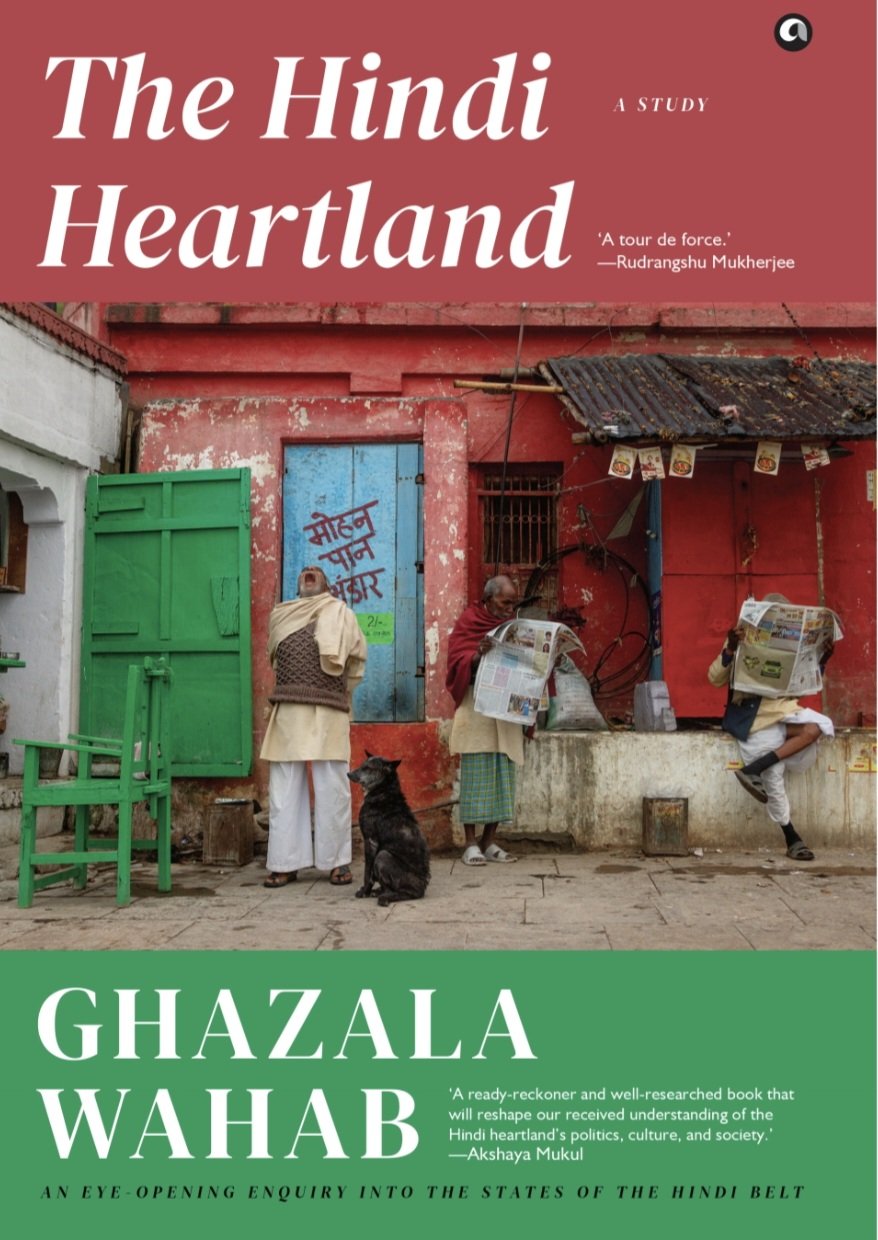Rajnath Singh Exhorts Rule-Based International Order at 11th ASEAN Meeting
Addressing the 11th ASEAN Defence Ministers’ Meeting-Plus forum at Vientiane, Lao PDR on November 21, defence minister Rajnath Singh said, “India stands for freedom of navigation and overflight, unimpeded lawful commerce and adherence to international law for peace and prosperity in the Indo-Pacific.”
Singh said that India would like to see a code of conduct that does not prejudice the legitimate rights and interests of nations which are not party to these deliberations. The code should be fully consistent with international law, in particular the UN Convention Law of Sea 1982, he added. Singh said that it is ‘providential’ that the 11th ADMM-Plus was being held in Lao PDR, which has internalised the Buddhist principles of non-violence and peace. He was of the view that it is time that the Buddhist doctrines of peaceful co-existence be embraced more closely by all, as the world is increasingly getting polarised into blocks and camps, leading to increasing strain on the established world order.
“India has always advocated and practiced dialogue for resolving complex international issues. This commitment to open communication and peaceful negotiation is evident in India’s approach to a wide range of international challenges, from border disputes to trade agreements. An open dialogue promotes trust, understanding, and cooperation, laying the foundation for sustainable partnerships. The power of dialogue has always proven effective, yielding tangible results that contribute to stability and harmony on the global stage. India believes that genuine, long-term solutions to global problems can only be achieved when nations engage constructively, respecting each other’s perspectives and working toward shared goals in the spirit of cooperation,” he said.
Describing 21st century as the ‘Asian Century’, the defence minister said the ASEAN region has always been economically dynamic and bustling with trade, commerce and cultural activities. He added that, all through this transformational journey, India has remained a trusted friend of the region. Citing Rabindranath Tagore, from the time he visited South East Asia in 1927, Singh said, “Everywhere I could see India, yet I could not recognise it.” According to Singh, the statement symbolises the deep and widespread cultural and historical ties between India and South East Asia.
On India celebrating a decade of the government’s Act East policy, Singh pointed out that the dividends are paying out in the strengthening of India’s ties with ASEAN and Indo-Pacific nations.
In view of the natural disasters wreaking havoc in different parts of the world, Singh stated that it reminds of the perils of climate change. He complimented the chair for choosing the most relevant topic in today’s scenario for the 11th ADMM-Plus Joint statement. “Strengthening resilience to climate change in the defence domain requires multi-stakeholder engagement, from developing innovative solutions to managing the adverse impacts of climate change. This includes protecting vulnerable populations as well as safeguarding our defence installations,” he added. Raksha Mantri highlighted the need to deepen the understanding of the interlinkages between climate change and threats to security. He called for developing an ADMM-Plus Defence Strategy on Climate Change.
Singh also drew attention to the Global Commons, the shared natural resources and ecosystems essential to sustaining life and bringing prosperity on the planet. He underscored the need to safeguard these Global Commons in a just and balanced manner by not resorting to unilateral actions. These resources provide invaluable ecological, economic, and social benefits that extend beyond national boundaries, he said.
The 11th ADMM-Plus forum consisted of 10 ASEAN countries, eight Plus countries, and Timor Leste. The meeting was chaired by deputy prime minister and defence minister of Laos General Chansamone Chanyalath.
Meetings on the Sideline
With the Chinese Defence Minister: On November 20, Singh met the defence minister of China Admiral Dong Jun. This was the first meeting of the two defence ministers following the recent disengagement agreements, and the meeting of Prime Minister Narendra Modi and Chinese President Xi Jinping on the sidelines of BRICS summit.
Singh highlighted the fact that amicable relations between India and China, the two largest nations in the world, would have positive implications for global peace and prosperity. Considering that both countries are and will continue to remain neighbours, he mentioned that “we need to focus on cooperation rather that conflict.”
Singh called for reflecting on the lessons learnt from the unfortunate border clashes of 2020, take measures to prevent recurrence of such events and safeguard peace and tranquillity along the India-China border. He emphasised and looked forward to greater trust and confidence building between the two sides through de-escalation. Both sides agreed to work together towards a roadmap for rebuilding mutual trust and understanding.
With the US Secretary of Defence: On November 21, Singh met US Secretary of Defence Lloyd J Austin. The two leaders commended the progress achieved by the India-US defence partnership, based on increased operational coordination, information-sharing, and industrial innovation. Both sides recognised the remarkable progress made under the US-India Defence Industrial Cooperation Roadmap, including ongoing collaboration to advance priority co-production arrangements for jet engines, munitions, and ground mobility systems.
Singh recalled his successful visit to the US in August 2024, wherein two important documents were concluded, the Security of Supplies Agreement (SOSA) and the Memorandum of Agreement regarding the deployment of Liaison Officers. Both sides welcomed ongoing efforts to deepen the military partnership and interoperability to maintain a free and open Indo-Pacific.
Drawing attention to the successful QUAD Summit attended by Prime Minister Narendra Modi on September 21, Singh emphasised the need for both sides to work together on the agreed deliverables including the new regional Maritime Initiative for Training in the Indo-Pacific (MAITRI), the first-ever Quad-at-Sea Ship Observer Mission, and the launch of a Quad Indo-Pacific Logistics Network pilot project, to support civilian response to natural disasters more rapidly and efficiently across the Indo-Pacific region.
Both sides affirmed support to the growing defence innovation collaboration between the two governments, businesses, and academic institutions fostered by India-US Defence Acceleration Ecosystem, by providing them with more joint challenges, funding opportunities and visibility. Both sides agreed to continue the momentum achieved in the last two and a half years through growing convergence to strategic interests and enhanced India-US defence cooperation.
Meetings with Defence Ministers of South Korea, Australia & New Zealand: In addition to his meeting with Austin, Singh also met minister of National Defence, Republic of Korea Kim Yong Hyun, minister for defence industry & capability delivery of Australia Pat Conroy and defence minister of New Zealand Judith Collins on November 21.
In his meeting with South Korean defence minister, both sides agreed that bilateral defence cooperation is on a positive trajectory and the similarity of challenges and threats necessitated strong bilateral defence relations. Both sides agreed to work together on the ‘Road map for Defence Industry Corporation’ signed in February 2020 through established mechanisms like Defence Policy Dialogue (DPD). The next edition of DPD is scheduled in December 2024.
Singh emphasised that defence manufacturing ecosystems of the two nations had a great potential for growth in co-production and co-development. He invited the Korean side to invest in India’s defence corridors which has tremendous opportunities for Korean companies to set up manufacturing facilities in India. India and Korea share a special strategic partnership which has made significant progress in recent years and is bound to move to the next higher level.
In his meeting Australian defence minister, Singh pointed out the untapped potential for Indian and Australian defence industries to collaborate and cooperate in niche areas. The two also exchanged implementing arrangement on air-to-air refuelling between both the countries. This would strengthen interoperability between the two air forces. Both sides agreed to take defence engagements to the next higher level by cooperating bilaterally as well as in the regional context.
To the defence minister of New Zealand, Singh said that their relationship was anchored in shared democratic traditions, commonality of institutions of governance, rule of law, English language, love for cricket, mountaineering and hockey and also shared vision of a peaceful, secure and prosperous Indo-Pacific region. He requested for early finalisation of Defence Cooperation Agreement (DCA) in order to further strengthen the defence cooperation between two countries, which is growing continuously through regular exchanges of visits of senior defence officials and naval ships.
Subscribe To Force
Fuel Fearless Journalism with Your Yearly Subscription
SUBSCRIBE NOW
We don’t tell you how to do your job…
But we put the environment in which you do your job in perspective, so that when you step out you do so with the complete picture.








